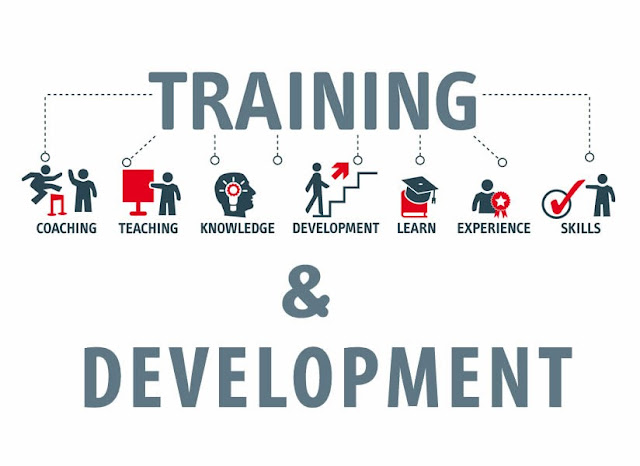AI Powered Workforce Planning
Introduction
The importance of having the appropriate talent in the right location at the right time never changes in today's corporate environment, even while industries change at breakneck speed. Still, it's easier said than done. Given the fluctuations of the labor market, it can be difficult to predict what your firm will require not just tomorrow but also months or years from now. Then introduce artificial intelligence. This edition of AI@Work explores how AI is transforming the work of HR professionals and how it has a significant impact on workforce planning.
1.
Forecasting Future Staffing Needs
Historically,
staffing predictions were based on current trends and manual estimations,
making them reactive and occasionally imprecise. AI takes a
proactive approach:tom darly (2023).
Data-driven
predictions:
AI systems analyze vast amounts of data to make predictions. From studying industry
trends to examining your company's growth trajectories, AI offers a detailed
forecast of the kind of talent you'll need in the
future.
Real-time
adjustments:
Unlike traditional forecasting methods, which might be updated quarterly
or even annually, AI systems constantly adjust predictions based on new
data. If a sudden market shift happens, AI is quick to catch it.
2.
Identifying Skills Gaps
In
an evolving marketplace, the skills that were relevant yesterday might not
necessarily be in demand tomorrow. AI assists in spotting these
discrepancies:jothy kumar (2024).
Skills
inventory:
AI can create a dynamic inventory of the current skills present within your
organization, categorizing and ranking them.
Gap
analysis:
By comparing the skills inventory with the forecasted needs, AI can pinpoint precisely where
the gaps are – be it in technical proficiencies, soft skills, or leadership
capabilities.
3.Personalized
Training and Development
Once
you understand what you have versus what you need, the next step is upskilling.
AI's role in training and development is multifaceted:Sheila Boysen,(2024).
Tailored training programs: AI can curate personalized training modules based on an individual's current skills, learning pace, and the identified gaps. This ensures that employees aren't just subjected to a one-size-fits-all approach but receive training tailored to their unique needs.
Monitoring
& Feedback:
As employees progress through training, AI systems can monitor their
performance, providing real-time feedback and adjusting the training regimen if
necessary.
4.
Optimizing Talent Placement
Having
the right skills is one part of the equation. Ensuring that talent is
positioned where it can be most impactful is another:
Strategic
talent allocation:
By analyzing the business's immediate needs, future projects, and the
individual profiles of employees, AI can suggest where talent would be most
effectively placed.
Mobility
and growth:
AI can also identify which employees are ripe for new challenges or roles,
ensuring internal mobility and thereby bolstering employee satisfaction and
retention.
5.
The Bigger Picture: Aligning HR with Business Goals
AI
doesn't just make HR processes more efficient; it aligns them more closely with
the broader business goals:
Scenario
planning:
By simulating different business scenarios, AI can help HR professionals
understand how various situations (like market downturns, expansions, or
product launches) might impact staffing needs.
Risk
management:
AI's predictive capabilities can also identify potential future risks, allowing
HR to devise strategies in advance.
Conclusion
As
HR moves away from intuition-based decisions to data-driven strategies, the
role of AI in workforce planning becomes undeniable. The ability to anticipate
needs, identify gaps, and create tailored training programs ensures that
businesses are always a step ahead. With AI by their side, HR professionals are
better equipped than ever to ensure the alignment of talent strategy with
business objectives, driving growth, and fostering innovation.
Refferance:
Tom Darly(2023),AI-Powered Workforce Planning,linkedin (online)https://www.linkedin.com/pulse/ai-powered-workforce-planning-future-hr-strategies-tom-daly
jothy kumar(2024),How AI Is Helping To Identify Skills Gaps And Future Jobs,(online),https://www.edoxi.com/studyhub-detail/ai-skills-gaps-and-future-jobs
Sheila Boysen,(2024),Harnessing the Power of AI in Training and Development,atd,(online)https://www.td.org/atd-blog/harnessing-the-power-of-ai-in-training-and-development



AI-powered workforce planning optimizes staffing needs through data analysis, predicting future demands and identifying skill gaps. By harnessing AI algorithms, HR can make informed decisions, ensuring the right talent is available to meet organizational objectives efficiently and effectively.
ReplyDeleteWell explanation about AI powered workforce planing optimizes staffing need through data analysis
ReplyDeleteTimely relevant topic
ReplyDeleteOverall, this article serves as a valuable resource for HR professionals seeking to understand and leverage AI for more effective workforce planning, providing a comprehensive overview of the benefits and implications of integrating AI into HR practices.
ReplyDelete